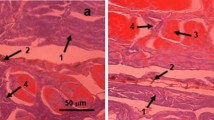Abstract
This work describes a practical way to optimize the high level of the chef creativity to produce rational approaches to food design. It is particularly focused on the preparation of two dishes: bubbly juice and false skin. For the first dish, three samples were prepared with egg white protein (EWP) and xanthan gum at pH 4.6 and pH 7.0. At pH 4.6 (isoelectric point), there were substantial differences of the interfacial dilational modulus of EWP when xanthan gum was added. At 1 mg/ml xanthan, the system showed a very strong interface (high viscoelasticity) compared to the other samples. Measuring half drainage time revealed which samples were the most stable. The properties discussed were related to stability. For the false skin dish, edible films were made by gelatin extracted from cod skins (A solution) and a mixture of cod skin gelatin and commercial gelatin (AG solution). The results showed that tensile strength (TS) of gelatin films increases almost by 25%, elongation at break (EAB) by 14%, and the Young modulus (E) by almost 100% when increasing protein concentration. To confirm water plasticizer effect, the results were compared to a gelatin film made with 30% glycerol (plasticizer). Water content affects to a great extent the mechanical properties of the films. Finally, images of the dishes are presented in order to have a full view of the purpose and the results obtained.








Similar content being viewed by others
References
F. Adria, H. Blumenthal, T. Keller, H. McGee (2006). Statement on the “new cookery”, accessible at http://observer.guardian.co.uk/foodmonthly/story/0,,1968666,00.html
E. Dickinson, E. Izgi, Colloids Surf. A Physicochem. Eng. Asp 113(1–2), 191–201 (1996)
J.C. Arboleya, P.J. Wilde, Food Hydrocoll. 19(3), 485–491 (2005)
R. Baeza, C.C. Sanchez, A.M.R. Pilosof, J.M.R. Patino, Food Hydrocoll. 18(6), 959–966 (2004)
Yudi Pranoto, Chong Min Lee, Hyun Jin Park, LWT–Food Sci. Technol 40(5), 766–774 (2007)
Ingvild J. Haug, Kurt I. Draget, Olav Smidsrod, Food Hydrocoll. 18(2), 203–213 (2004)
P. Montero, M.C. Gomez-Guillen, J. Food Sci. 65(3), 434–438 (2000)
O.H. Lowry, H.I. Rosebrough, A.L. Farr, R.I. Randall, J. Biol. Chem. 193, 265–275 (1951)
J.H. Muyonga, C.G.B. Cole, K.G. Duodu, Food Hydrocoll. 18(4), 581–592 (2004)
ASTM. (2001). Standard test method for tensile properties of thin plastic sheeting. Annual book of ASTM standards. Designation D882-01. Philadelphia: ASTM, American Society for Testing Materials
P.J. Wilde, Mackie, Verlag Metall Innovation Technologie MIT 59–64 (1999)
P.J. Wilde, Curr. Opin. Colloid Interface Sci. 5(3–4), 176–181 (2000)
R. Baeza, C.C. Sanchez, A.M.R. Pilosof, J.M.R. Patino, Food Hydrocoll. 19(2), 239–248 (2005)
V.B. Tolstoguzov, Food Hydrocoll. 4, 429–468 (1991)
D.J. Carp, G.B. Bartholomai, P. Relkin, A.M.R. Pilosof, Colloids Surf. B Biointerfaces 21(1–3), 163–171 (2001)
J.P. Davis, E.A. Foegeding, Colloids Surf. B Biointerfaces 54(2), 200–210 (2007)
Magnus Gudmundsson, Hannes Hafsteinsson, J. Food Sci. 62(1), 37–39 (1997)
Peng Zhou, Joe M. Regenstein, J. Food Sci. 70(6), c392–c396 (2005)
S. Zhang, Y. Wang, J.L. Herring, J.-H. Oh, J. Food Sci. 72(9), C498–C503 (2007)
A. Jongjareonrak, B. Soottawat et al., Food Hydrocoll. 20(4), 492–501 (2006)
Rungsinee Sothornvit, John M. Krochta, J. Food Eng. 50(3), 149–155 (2001)
Acknowledgements
The authors would like to acknowledge Dr Brent Emerson for his help during the writing of this manuscript.
Author information
Authors and Affiliations
Corresponding author
Additional information
This research has been supported by the Department of Agriculture and Fisheries from the Basque Government.
Rights and permissions
About this article
Cite this article
Arboleya, JC., Olabarrieta, I., Luis-Aduriz, A. et al. From the Chef’s Mind to the Dish: How Scientific Approaches Facilitate the Creative Process. Food Biophysics 3, 261–268 (2008). https://doi.org/10.1007/s11483-008-9078-3
Received:
Accepted:
Published:
Issue Date:
DOI: https://doi.org/10.1007/s11483-008-9078-3




